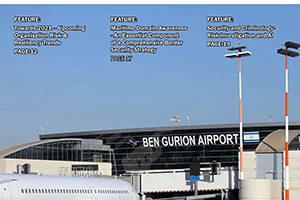Space ISAC Announces Initial Operating Capability for Threat Information Sharing
The Space Information Sharing and Analysis Center (Space ISAC) has announced a significant milestone, declaring the organization has reached Initial Operating Capability (IOC) following the launch of Space ISAC’s member portal and threat intelligence sharing platform. This capability will serve as the first of its kind, enabling commercial industry and international space partners to share timely, actionable information about space-based threats.
This milestone event marks just over one year since Space ISAC’s board of directors and leaders from U.S. government agencies met to discuss the timeline to achieve initial operating capability.
“Achieving IOC for the Space ISAC is one of the most critical milestones toward protecting the space critical infrastructure for the global space community. This platform for information sharing will bring our community together and align our efforts to increase the security and reliability of space systems,” said Frank Backes, Senior Vice President, Kratos Federal Space and Chairman of the Board at Space ISAC.
Space ISAC has selected Cyware to host the Space ISAC portal and threat intelligence sharing platform. The platform allows Space ISAC members to share threat data securely with next-generation partnership capabilities that meet the needs of the space industry’s rapidly evolving threat environment.
“Our team at Cyware believes it is mission-critical to support and empower cybersecurity sharing communities with the tools and resources needed to collaborate and share intelligence to improve security operations and maintain resiliency,” said Anuj Goel, CEO and co-founder of Cyware. “We are impressed by Space ISAC’s dedication to improving the defense capabilities of their membership. They are consistently seeking out the best opportunities to enhance threat intelligence sharing in an integrated and collaborative manner, that reduces cyber risk across space and other key industries where intelligence is critical.”
“It’s incredibly exciting to see the introduction of such a platform where commercial industry and international space partners will soon be able to share timely information about space-based threats,” said William O. Ferguson, Cyber Security Operations Manager for founding board member SES.
Space ISAC consists of 24 members and counting from the global space community. Johns Hopkins Applied Physics Lab, a founding board member of Space ISAC, leads a Space ISAC team that vets all new members to ensure that Space ISAC maintains the highest levels of trust and integrity within its membership base.
“We are thrilled to reach this milestone, a giant step in making all of us together smarter and safer than any of us alone. I hope that many others will join us in ensuring the resilience of the global space enterprise,” said Michael Ryschkewitsch, Head, Space Sector at Johns Hopkins Applied Physics Laboratory.
Andre Adelsbach, vice president of Group Information and Cyber Security for SES, added, “At SES, we realize the importance of safeguarding current and emerging space service technology, and welcome efforts that can be developed across the industry.”
Additionally, Space ISAC’s IOC includes hosting member events and facilitating working groups and task forces. These initiatives have created opportunities for Space ISAC members and partners to develop the functions of the ISAC and raise the entire space sector’s security posture. This includes an information sharing work group, an analyst work group, and task forces dedicated to small satellites and Space Policy Directive-5.
“As an ISAC we are responsible to coordinate across the entire space sector and communicate critical information sharing far and wide and for global space to create sector-wide situational awareness,” said Erin Miller, Executive Director, Space ISAC.




